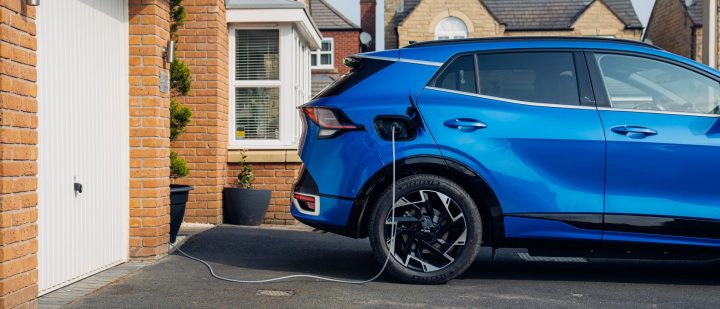With a huge hike in domestic utility costs, there’s an even greater focus on whether electric cars are still cheaper to fuel than petrol and diesel cars, says Graham Conway, Managing Director at Select Car Leasing.
To extend the range of your EV battery without breaking the bank, I share my top tips on how to find the most cost-effective charging options.
Charge off-peak
Some energy providers charge less for using electricity at certain times of the day (or night). This is generally used to curb the demand for electricity during peak hours. Cheaper rates are usually applied at night from about 10pm and 8am, although this may differ between suppliers.
If your energy supplier charges off-peak rates, then it’s best to take advantage of this and charge your vehicle during these periods.
The cost of electricity per unit, under the new price cap increase, will cost about 52p while an off-peak charging rate could cost you as little 7.5p per unit of electricity, depending on your provider. Exclusively charging during off-peak hours instead of peak hours could save you about £1,000 a year if you’re charging a car with an 80kWh battery.
It’s easy to set an electric vehicle to charge only during these hours via the car’s in-screen menus, or internet-enabled home chargers also offer controlled charging hours.
It’s worth scouting around to find out which energy suppliers offer off-peak energy rates as this can help you cut costs when charging your vehicle overnight.
Stick to home charging
While your electricity prices are likely to increase when you’re charging your car from home, this is still a more affordable option than relying on the public charging network.
Many public charge point providers have recently increased their prices, which puts further strain on cash-strapped motorists.
The impact of the price increase will depend on factors like the type of electric vehicle you own, its battery size and how many miles they drive. However, it’s estimated that charging your car at home could save you over £1200 a year instead of using a public charge point.
Take advantage of free charge points
There are a little over 5,000 free charging ports across the UK, with the majority located at supermarkets and car parks.
While some of these chargers have restrictions, it’s a great idea to keep these chargers in mind while you’re out running errands. Useful sites, like ZapMap, mark the locations of all free charging stations, which allows you to plan out where to shop to take advantage of the free charging ports.
In many instances, these free charges are still accompanied by parking fees, but this may still be cheaper than using a paid-for public charger.
Driving tips to make the most of each charge
While the dramatic increase in electricity costs is likely to impact your budget, the cost of charging an electric vehicle is still more affordable than filling up with petrol. Charging your car during off-peak hours will cost you £1,229 per year less than if you were filling up a petrol or diesel car.
You can extend the range of your electric vehicle by adopting eco-driving techniques and working with your vehicle’s features.
Top tips
- Consider how you use the heating and air conditioning. For example, pre-heat the car while plugged in to avoid consuming energy from the battery at the beginning of a journey.
- Keep the battery between 20-80 percent charged at all times. Frequently charging your battery to 100 percent can cause your vehicle’s battery to degrade, which will affect the overall lifespan of the battery.
- Allow the battery to cool down before recharging. This is because the battery produces excess heat when being charged. Research shows that maintaining optimal temperature of the battery improves safety and reduces maintenance costs.
- Limit your use of rapid chargers as these require a lot of high currents, which heat up your car’s battery. Depending on the make and model of your car, using fast chargers too frequently can limit your battery’s lifespan.
- Don’t leave your car fully charged for long periods as it can accelerate the wear on the battery’s cells. If you need to leave your car for long periods, it’s recommended you leave the battery charge between 50 and 80 percent.
- Understand and use your vehicle’s eco-mode or features, as these can help save energy by limiting engine power. This is ideal for daily trips when a high-powered engine isn’t necessary.


